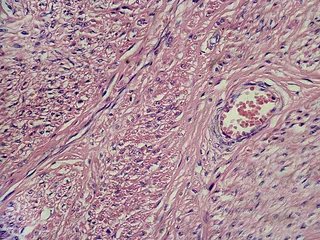Uterine Fibroids: What You Need to Know
How fibroids impact Black women and our reproductive health.

1 / 9
Understanding Fibroids - Recently, Real Housewives of Atlanta star Cynthia Bailey went public with her own personal battle with uterine fibroids. Learn more about how these noncancerous tumors impact Black women and our reproductive health. —Kellee Terrell (@kelleent)(Photo: Craig Barritt/Getty Images)

2 / 9
Types of Fibroids - There are four major types of fibroids. Intramurals are located in the wall of the uterus and are the most common. Subserosal are located outside of the uterus wall. Submucosal are located in the muscle of the wall of the uterus. Cervical tumors are located at the top of the womb (cervix).(Photo: Garry DeLong/Getty Images)
Photo By Photo: Garry DeLong/Getty Images

3 / 9
Black Women and Fibroids - Black women are disproportionately affected by fibroids. We are three times more likely to develop fibroids and 80 percent of African-American women will develop fibroids by the time they are 35 years old. (Photo: Jose Luis Pelaez Inc/Getty Images)

4 / 9
What Causes Them? - Doctors aren’t sure, but they believe that genetics, obesity, hormones and high levels of insulin may play a role. Also, a 2013 study found that Black women who received their first relaxers at 10 were more likely to develop fibroids than those who were natural. Plus, a recent study found that past sexual abuse raises our risk for fibroids by 16 percent. (Photo: © Jose Luis Pelaez Inc/Blend Images/Corbis)

5 / 9
Fibroids and Fertility - While fibroids can make it harder for some to get pregnant, only a mere 3 percent of infertile women have fibroids. Submucosal fibroids will give women the most difficulty in getting pregnant, says BabyCenter.Com. Surgery may help those with fibroids who are having difficulty getting pregnant. (Photo: Antenna/Getty Images)
ADVERTISEMENT

6 / 9
Other Complications - Fibroids can also cause other complications including heavy bleeding (which can be serious enough to cause anemia) or painful periods, feeling of fullness in the lower stomach area, enlargement of the lower abdomen, passing urine often, pain during sex, lower back pain, and complications during pregnancy and labor.(Photo: Stockbyte/Getty Images)

7 / 9
Diagnosing Fibroids - Fibroids can be found through a routine pelvic exam. From there your doctor may suggest a range of tests including an ultrasound, lab tests and high-tech imaging tests. (Photo: Nicole Waring/Getty Images)

8 / 9
Treating Fibroids - Treating fibroids differs in different people. Some people have a “wait and see” approach. Others take different types of medicine, have surgery, receive an MRI and in rare cases may have a hysterectomy (removing the uterus). Read more about treatment options at MayoClinic.Com.(Photo: Steve Cole/Getty Images)
